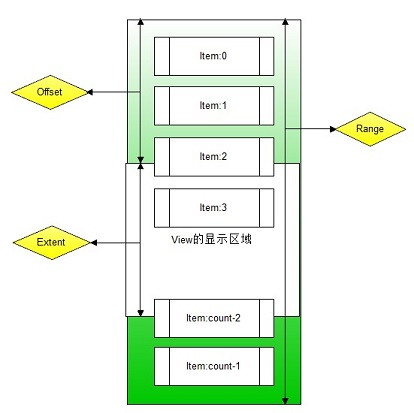from an answer to one of my other questions I found an Google Demo of a ListView subclass that allows item reorder.
The demo works great, but I am having some trouble to understand how the it works: When an item is dragged above/below the bounds of the ListView, the ListView starts scrolling up/down to reveal new items. The necessary calculation uses different parameters of the underling ScrollView:
public boolean handleMobileCellScroll(Rect r) {
int offset = computeVerticalScrollOffset();
int height = getHeight();
int extent = computeVerticalScrollExtent();
int range = computeVerticalScrollRange();
int hoverViewTop = r.top;
int hoverHeight = r.height();
if (hoverViewTop <= 0 && offset > 0) {
smoothScrollBy(-mSmoothScrollAmountAtEdge, 0);
return true;
}
if (hoverViewTop + hoverHeight >= height && (offset + extent) < range) {
smoothScrollBy(mSmoothScrollAmountAtEdge, 0);
return true;
}
return false;
}
heightis the height of the ListView itselfoffsetis the scroll position = how many units/pixels have been scrolled up/downrangeis the height of the complete content.extent- well, what is this?
ListView inherits computeVerticalScrollExtent() from View and the docu says:
Compute the vertical offset of the vertical scrollbar's thumb within the horizontal range. This value is used to compute the position of the thumb within the scrollbar's track.
If one looks at the code computeVerticalScrollExtent() is not implemented by one of the sublasses but only directly by View: It simply returns the height of the view.
This makes sense: If the ListView/ScrollView has a height of 500, the part of the scroll content that is visible at a time is also 500. Is this the meaning of the ScrollExtent? Why is ScrollExtent necessary? Why not simply use getHeight() directly?
I think I am missing something and I am happy about any hint!

